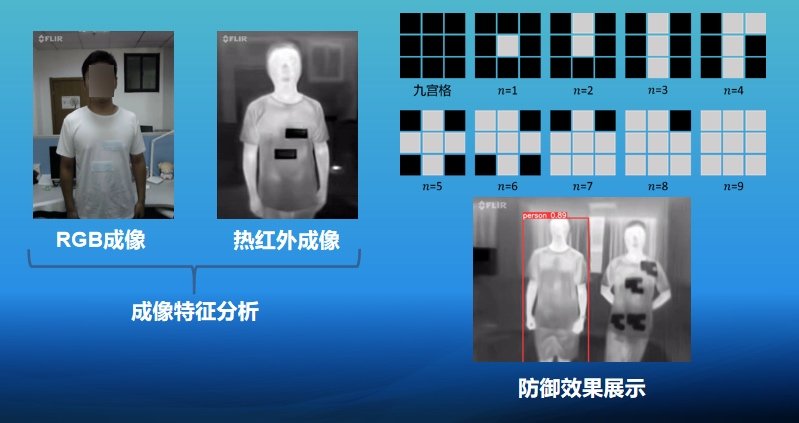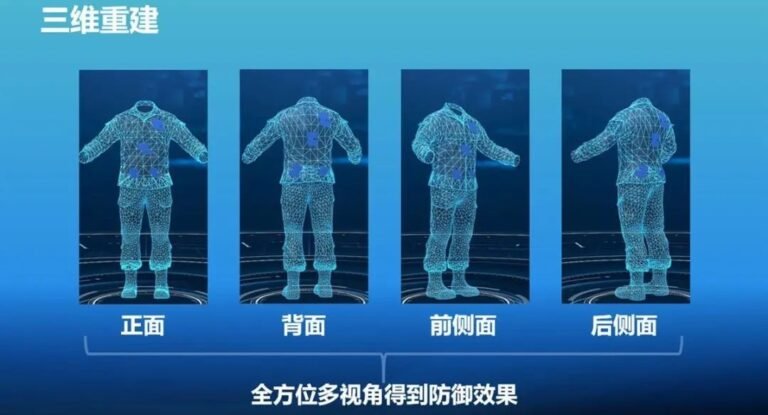At first glance, it may look like an ordinary, run-of-the-mill camouflage coat. However, what a group of Chinese graduate students have actually developed is a cost-effective “invisibility coat” capable of concealing the human body from AI-monitored security cameras, both day and night.
At the forgivable price of just $70 USD, the high-tech jacket, which has been dubbed the “InvisDefense coat,” was crafted by a team of four graduate students from Wuhan University in China. The real-life sci-fi coat secured the top prize at the inaugural “Huawei Cup,” a cybersecurity innovation contest sponsored by the Chinese tech giant Huawei.
Professor Wang Zheng from the School of Computer Science oversaw the team, comprising doctoral student Wei Hui from the School of Computer Science, along with postgraduates Li Zhubo and Dai Shuyv from the School of Cyber Science and Engineering, and postgraduate Jian Zehua from the Economics and Management School.
The InvisDefense invisibility cloak involves a kind of camouflage pattern designed by a new algorithm, which challenges the efficacy of this commonly used method of AI pedestrian detection. “In layman’s terms, it means cameras can detect you but cannot determine that you are human,” according to a statement released by Wuhan University (WHU).


In contrast to stealth fighter jets, which are only invisible to radar, the InvisDefense invisibility cloak renders itself undetectable to machine recognition rather than the naked eye. “Visual neural network refers to machine vision, not visual recognition of humans. It is widely used in video surveillance equipment with the pedestrian detection function and smart cars,” Professor Zheng explained.
The all-weather InvisDefense coat is visible to the human eye. However, to cameras, specific camouflage patterns disrupt the visual neural network during the day, while at night, InvisDefense incorporates temperature control materials, allowing stealth protection from thermal infrared imaging through distinct color blocks.
An innovative defense product, the InvisDefense invisibility cloak offers a potential new means to safeguard personal privacy and security. However, there are also concerns that arise from the development of such technology; the design of the coat could potentially confuse certain detection systems employed in self-driving cars and similar technologies.
During tests of the coat using on-campus security cameras, the accuracy of human detection saw a reduction of 57 percent. The researchers noted that one of the first challenges in developing the coat was finding a balance to deceive both the camera and the human eye.
“Nowadays, many surveillance devices can detect human bodies. Cameras on the road have pedestrian detection functions and smart cars can identify pedestrians, roads and obstacles,” Professor Wang told the South China Morning Post.
“Our InvisDefense allows the camera to capture you, but it cannot tell if you are human.”
Outside of the consumer trends that may potentially evolve from this technology, Professor Wang Zheng noted the invention may likely find possible applications in stealth military uniforms to evade detection from drones or AI units.
Furthermore, he notes that the algorithm could prove valuable in AI research, primarily by allowing researchers to more fully identify potential vulnerabilities.
Chrissy Newton is a PR professional and founder of VOCAB Communications. She hosts the Rebelliously Curious podcast, which can be found on The Debrief’s YouTube Channel. Follow her on X: @ChrissyNewton and at chrissynewton.com.

